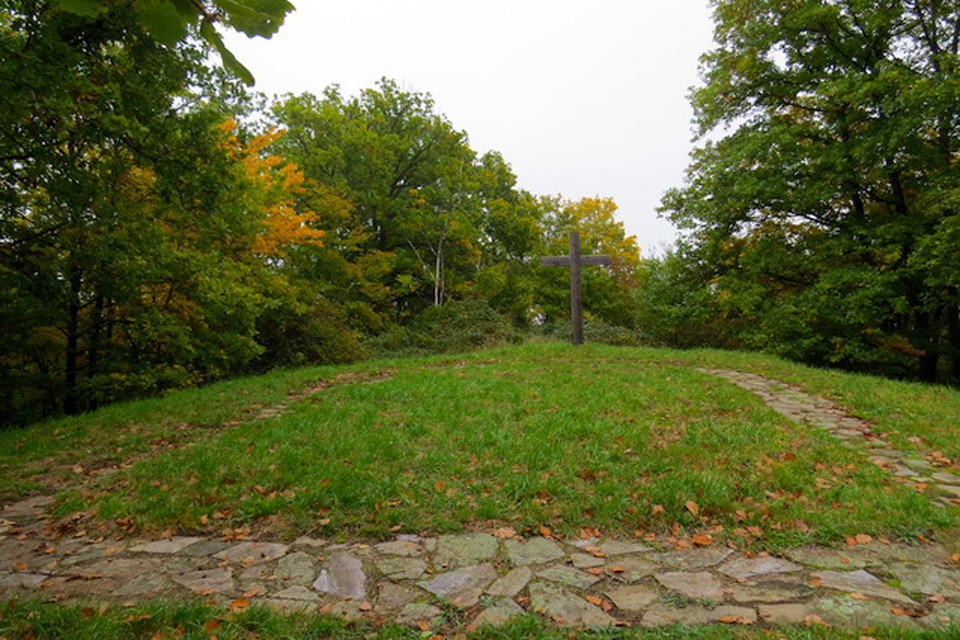Archaeologists have been working for decades to excavate the early medieval settlements at Thunau near Gars in Eastern Austria. Recent studies of the burial ground excavated in 1975-2000 tell the story of the burial of the unbaptized destined for limbo.

Gars-Thunau is located approximately 25 km north of the river Donau, between Vienna and Prague. Here on a ridge – the Schanzberg overlooking the river Kamp – people have settled since the Neolithic. The place is famous for its finds from La Tène culture. Later, an Early Medieval fortified settlement took ruled over the valley until a castle was constructed, the Gars am Kamp, dated to the 11th century; today a spectacular ruin, it witness to the geopolitical significance of the place bordering on Bohemia and Moravia to the north, and Francia to the west.
Sources tell us of land in the neighbourhood, which was donated to the Bishop of Freiburg by a man named Joseph in AD 902-03. The witnesses’ names reveal a mixture of Frankish and Slavic people, indicating the Christianised status of baptised Slavs. The find of several lead crucifixes in the earliest burial ground tells us of an earlier church here. Generally, the Kemp Valley is regarded as an early missionary mark worked by people sent out from Passau and Salzburg after the Carolingian conquest of the Avars after AD 796.
Located at the high point of the Early Medieval settlement, archaeologists excavated a manorial complex from the 9th-century with a burial ground holding 200 burials. This cemetery was situated on both sides of the path leading up to the gate opening up into the manor farm. Inside the burial ground, a free area indicated the site of a small wooden church. Later, in the tenth century, the manor on the higher ground seemed to lose its significance. At this point, the settlement further down gained some importance, leading to the construction of an early stone church surrounded by a cemetery with 217 burials. This church has been dated to ca. AD 1000 +20. Finally, in the 11th century, the fortified site relocated to Gars, where a new church was built c. 1130. In between, a church at the castle may have served as a
Recently, Elisabeth Nowotny has revisited the finds from this church carrying out new 14C-dating. Also, she has studied the remains of the buried anew. Some of these were laid to rest inside the church, more precisely the remains of four children, one foetus, one still-born, and two small children plus a grown-up killed by decapitation. The exciting element is, these people were buried after the church had been pulled down. Thus, the still-born was laid to rest on top of the apsis’s torn-down wall.
Eaves-drip-burials

Eaves-drip-burials are well-known from archaeological excavations. In German they were called “traufkinder”, non-baptised children said to receive a kind of baptism deriving from the rain dripping down from the eaves of the consecrated church. Such burials have been found and excavated all over Europe from the early Middle Ages and onwards.
On the one hand, the theological dilemma was that such children did not die in a state of grace. Instead, as all human beings, they were considered to carry the stigma of the original sin. On the other hand, they were not deemed able to have committed other sins, making them recruits to purgatory or even hell. As such, they were thrown into “Limbo”, the outer shell of hell. Here, they were exempt from pain and purification. Albeit deprived of God and Heaven’s beatific sight, these children were thought to live careless afterlives,
The dilemma posed by these children were especially acute before the 13th-century, when emergency baptism was no allowed. Until ca. 1200 baptism was a sacrament carried out at Easter and Pentecost. Only later, priests were obliged to teach lay-persons how to carry out a baptism. However, the constant renewal of this prescript reveals how difficult this obligation seemed to be. Non-baptised children and infants continued to pose as marginal existences.
Eaves-drip-burials at Thurnau and Göttweig
The burial of such children at an abandoned church seems to be new variation on this theme. The interments, which took place in the 12th and 13th century do belong to the Christian period. And yet, the children were not accounted for in the parish. Of course, the foetus and the newborn baby may have been born out of wedlock; and hence, hidden, to avoid penitential strictures. However, a couple of other cases are known from Austria where still-born or neonatal babies were buried in deserted churches. St. Georg near Göttweig Abbey poses a particular case.
St. Georg was a subsidiary church built high up on a mountain. As such, it was visible from afar; also, a cemetery did not surround it. And yet, 37 individuals of premature and still-born babies as well as infants were laid to rest next to the outer wall of the church. “The rather arbitrary orientation of the graves suggests that the interments were conducted without priestly supervision”, writes Hausmair (p. 223), who notes how the burials were located nearer to Heaven than to the earth.
Regarding the disposal of dead and unbaptised children, it appears different and local procedures developed.

SOURCES:
Ungetaufte und Unwürdige? Mittelalterliche Bestattungen bei der Kirche auf der Unteren Holzwiese von Thunau, Niederösterreich
By: Elisabeth Nowotny
In: Slovenská Archeológia Vol. 65 (2020), pp. 353-377
Topographies of the afterlife: Reconsidering infant burials in medieval mortuary space
By Barbara Hausmair
In: Journal of Social Archaeology Vol 17 (2017), No 2, pp. 210-236
Thunau am Kamp – Das frühmittelalterliche Gräberfeld auf der Oberen Holzwiese
By: Elisabeth Nowotny
Reihe: Mitteilungen der Prähistorischen Kommission, Band: 87
Der Verlag der Österreichischen Akademie der Wissenschaften 2018
